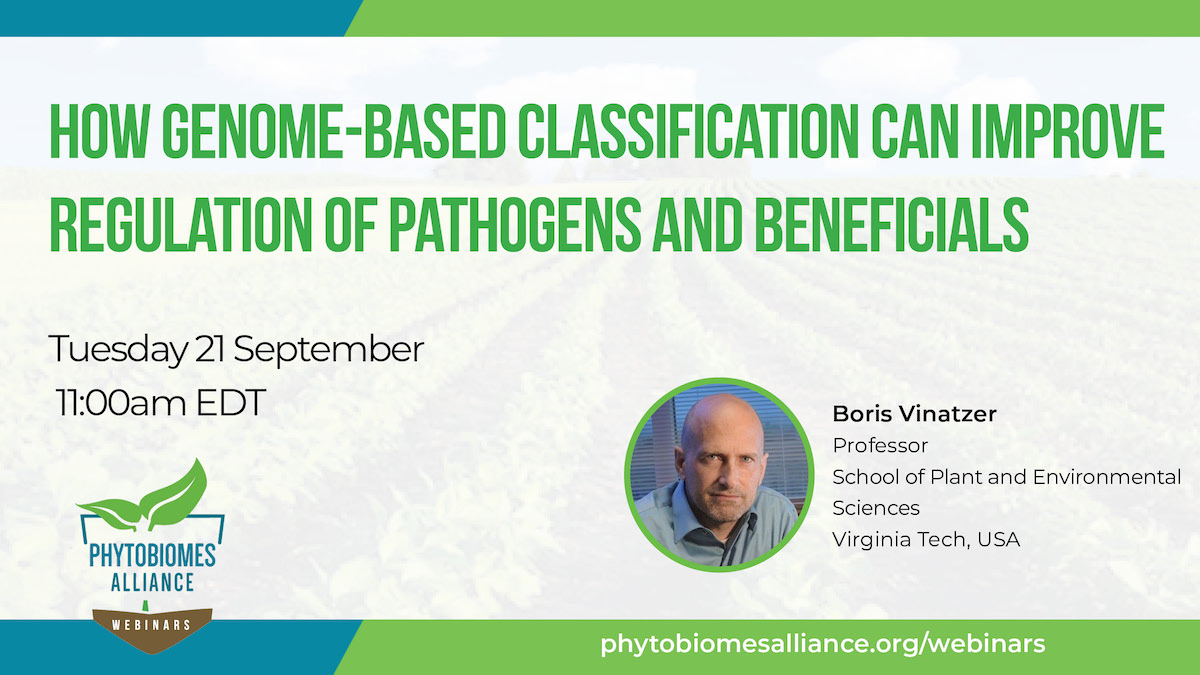
How genome-based classification can improve regulation of pathogens and beneficials
September 21, 2021
Location
Online
Presenters
Boris Vinatzer, Professor
School of Plant and Environmental Sciences
Virginia Tech, USA
Outline
A taxonomy that permits clear delineation of taxa of concern is a prerequisite for effective regulation. Resources can then be focused on regulatory action of pathogens that are of high impact while ignoring low impact pathogens and beneficials. Genome-based classification offers the opportunity to develop a highly resolved taxonomy that fulfills this purpose. Whole genome sequencing and metagenomic sequencing can then either be used as a detection tool or provide the necessary data for the design of molecular probes for specific detection of regulated pathogens.
We have used genome sequencing, phenotyping, and the Life Identification Number (LIN) concept to precisely delineate a clonal group of pathogens within the Ralstonia solanacearum species complex that has high virulence on potato at cool temperatures. Our goal is to help improve the USDA APHIS Select Agent definition of what is currently referred to as race 3 biovar 2 and use this project as a proof of concept for genome-based taxonomy applied to regulatory plant pathology. To implement whole genome sequencing and metagenomic sequencing in routine bacterial identification, we are also developing computational tools and a web server for use by plant disease diagnostic laboratories and any other lab that performs pathogen identification.
The webinar will conclude with a vision for a comprehensive genome-based framework of pathogen classification, identification, regulation, and risk assessment.
References
- Mechan Llontop ME, Sharma P, Aguilera Flores M, Yang S, Pollock J, Tian L, Huang C, Rideout S, Heath LS, Vinatzer BA (2020) Strain-level identification of bacterial tomato pathogens directly from metagenomic sequences. Phytopathology, http://dx.doi.org/10.1094/PHYTO-09-19-0351-R
- Tian L, Huang C, Mazloom R, Heath LS, Vinatzer BA (2020) LINbase: a web server for genome-based identification of prokaryotes as members of crowdsourced taxa. Nucleic Acids Research, https://doi.org/10.1093/nar/gkaa190
